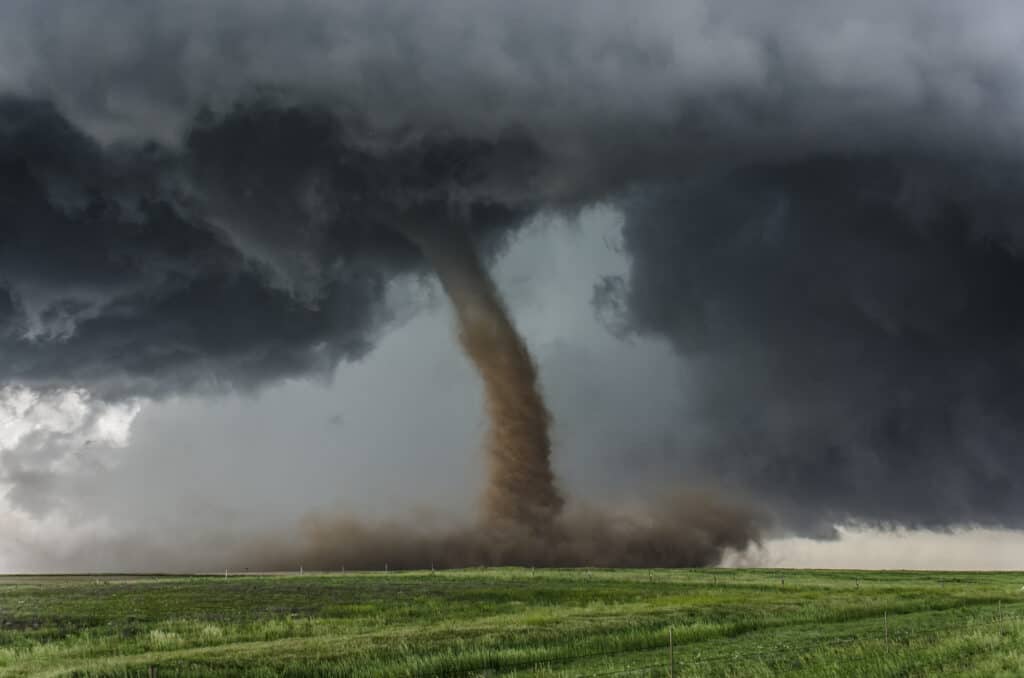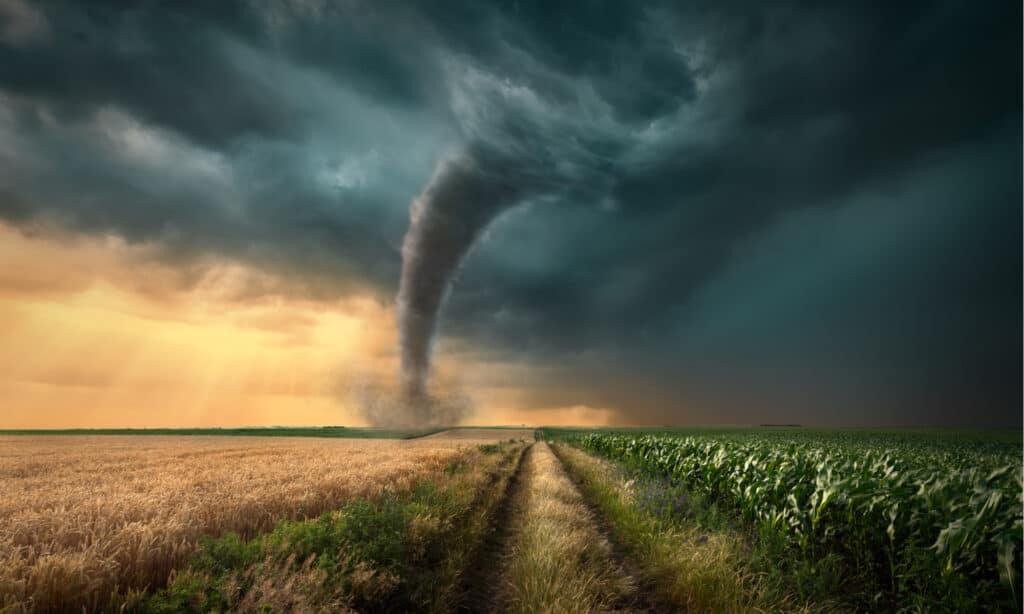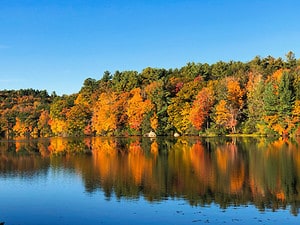Oklahoma experiences more tornadoes than any other state in the U.S. Since 1950, the state has been hit by 4,620 tornadoes, causing over five billion dollars worth of property damage. The two most powerful tornadoes to ever hit the state occurred in 1905 and 1947. They were responsible for the deaths and injuries of hundreds of people, and plenty of damage to the environment.

The highest wind speed ever recorded for a tornado was in 1999 in Bridge Creek, OK.
©Erin D. Maxwell / CC0 – License
Why Does Oklahoma Experience So Many Tornadoes?
Oklahoma and the surrounding states — Kansas, Missouri, Nebraska, Iowa, and South Dakota are part of “Tornado Alley.” This is a name given to the area by scientists because of the increased risk of tornadoes occurring. The states that are a part of tornado alley are more susceptible to “supercell thunderstorms”. These rare storms are extremely violent and capable of producing extreme hail and damaging winds. This is because of the formation inside the storm called a mesocyclone. Mesocyclones are deep, consistently rotating updrafts that keep the storm active and lead to the formation of tornadoes.
While supercell thunderstorms are rare, they are at the highest chance of occurring in the middle of the country. This is because the Great Plains allow cold, arctic air to flow south and warm, humid air from the Gulf of Mexico to flow north. When the two different air streams clash, they create the conditions for extreme thunderstorms and tornadoes.

Tornadoes usually develop because of supercell thunderstorms, a rare type of storm that usually occurs in tornado alley.
©Minerva Studio/Shutterstock.com
Tornado Scale
To understand how intense the most powerful tornado was to hit Oklahoma, you first need to understand the tornado scale. Tornadoes are given a rating according to the Enhanced Fujita scale, or EF-Scale. They are rated by their wind speed, and similar to hurricanes, the highest level is a five.
The scale starts at EFU, which is considered an “unknown” rating because it causes no surveyable damage. The next level is EF0, which is a tornado of 65 to 85 mph winds that does light damage. An EF1 does moderate damage, with wind speeds of 86 to 110 mph. An EF2 deals considerable damage with 111 to 135 mph winds. The next level, EF3, deals severe damage, with winds of 136 to 165 mph. An EF4 tornado deals devastating damage with its 166 to 200 mph winds. The highest classification is an EF5, which includes any tornado with winds of about 200 mph. These storms deal incredible damage and usually result in the loss of many lives. Both of the most powerful tornadoes to ever hit Oklahoma were EF5s.

Tornadoes are given a rating according to the Enhanced Fujita Scale, or EF-Scale, and are rated by their wind speed.
©Conceptual Art/Shutterstock.com
The Twister of 1905
On May 10, 1905, Oklahoma experienced one of the most powerful tornadoes in the history of the state. It developed in Jackson County, moving east-northeast following close to Otter Creek. It pretty much decimated the entire town and left no buildings standing north of the railroad tracks. Since it occurred so early in history before communication was as easily available between emergency services and journalists, the fatality and injury estimates varied quite a bit. While the official records by the OSAA state that 97 people died, some estimates claim it was up to 500, which was half of the town’s population at the time. The OSAA also noted the injuries of 58 people during and after this storm. There is no real measurement of what the wind speeds were for this tornado, but it was retroactively considered an EF5 due to the catastrophic damage it caused.
The Deadliest Tornado in History
The deadliest Oklahoma tornado occurred on April 9, 1947. It led to the National Weather Service beginning its tornado watch and warning program a few years later. It began in the city of Woodward and affected multiple states along a 220-mile path including Texas, Oklahoma, and Kansas. The original supercell tornado led to the spawn of multiple additional tornadoes which impacted multiple areas. However, the most damage was done by the original tornado.
It began in the small city of Canadian, TX, impacting a railroad station and taking its first life. It continued moving north, striking the town of Glazier, TX, and sweeping away most of the town’s structures. Glazier was completely destroyed, and most of its population dead. It continued moving and decimated the town of Higgins, TX, leaving a death toll of 51.
The tornado was at its worst when it hit Oklahoma. Once it hit the city of Woodward, the storm was an estimated two miles wide. It destroyed the town, decimated 100 city blocks, and killed approximately 107 people. It continued to do damage throughout the state, making its way into Kansas before eventually dissipating. The storm was the 6th deadliest tornado in U.S. history, and the most deadly tornado to occur in Oklahoma. The total death toll was 184, 116 in Oklahoma, and 980 people were injured (782 in Oklahoma).

Tornadoes typically happen right after a storm and can cause a domino effect, leading to more tornadoes developing.
©Rasica/Shutterstock.com
Wildlife and Tornadoes
Tornadoes have impacted Oklahoma long before humans inhabited the area. They displace and injure animals, and destroy the habitat where they live. One wildlife center in the state, Wildcare, is making an effort to help these animals. They take in any animals, with hawks and owls being a large portion of their rescues due to their broken wings. They have helped small and large animals, noting that all animals are impacted by the massive, violent storms.

Owls and hawks are affected by tornadoes in the state, which can break their wings and cause habitat loss.
©iStock.com/Bobliving
The photo featured at the top of this post is © Eugene R. Thieszen/Shutterstock.com
Thank you for reading! Have some feedback for us? Contact the AZ Animals editorial team.






